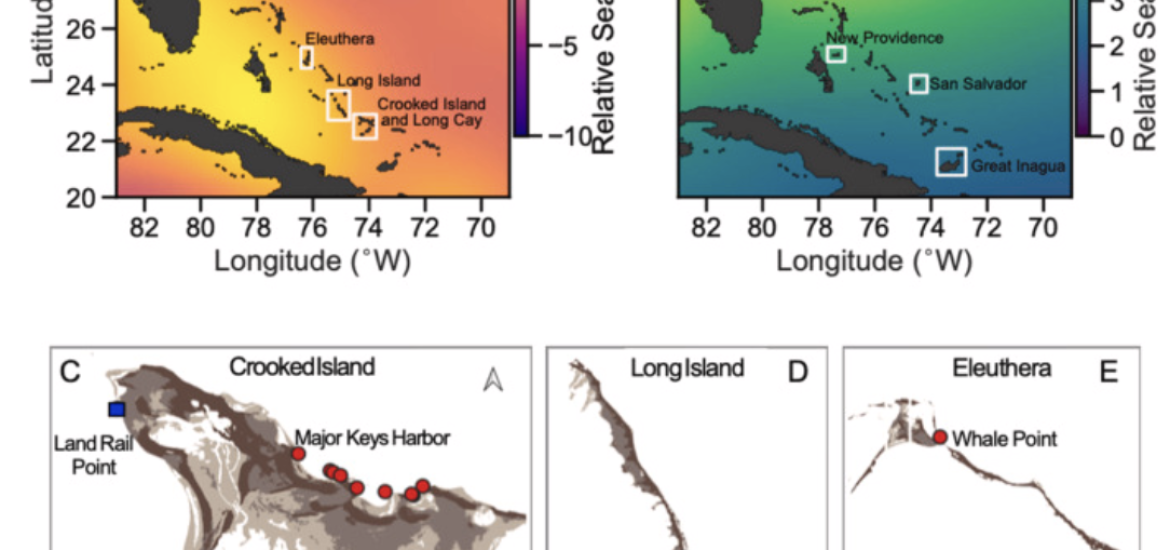- Home
- All News Overview
- Last Interglacial Global Mean Sea Level From High-precision U-series Ages of Bahamian Fossil Coral Reefs

Tuesday, 19 September, 2023
A new paper by Dumitru OA et al., members of the PALSEA working group, has been published in Quaternary Science Reviews.
Highlights
The authors "present a record of MIS-5e sea level based on high-precision U-series ages of corals with accurate elevation measurements from Crooked, Long Cay, Long Island, and Eleuthera, in The Bahamas."
They apply rigorous screening criteria to identify the best-preserved samples and find that nearly all of the samples fall within the strict “reliability” range.
They infer global mean sea level by correcting their data for glacial isostatic adjustment and long-term subsidence and find that it very unlikely exceeded 2.7 m. Their results are considerably lower than the previously-estimated peak MIS-5e sea level range of 5–10 m, but are consistent with some other recent studies.
They investigate the implications of these results for the timing and sources of meltwater contributions to MIS-5e sea level and find that contributions of Northern and Southern Hemisphere ice sheets during MIS-5e were either constant or, more likely, given the insolation forcing, out-of-phase.
> Access the article
> Find out more about the PALSEA (PALeo constraints on SEA level rise) working group